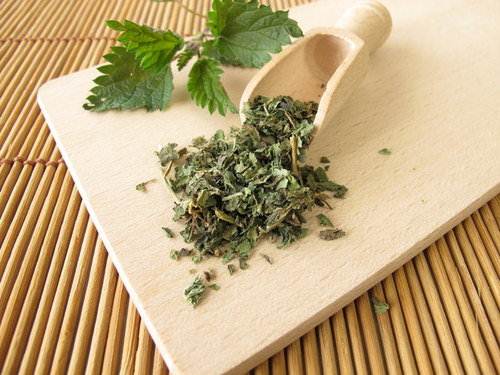
Stinging nettle leaf is a health conundrum. The leaves and stem of the plant contain a natural irritant that can provoke a rash not unlike what you experience when you contract poison ivy. However, in a weird and wonderful way, it is this exact stinging plant that is also thought to ease many other health “stings” – including infections, hay fever and internal bleeding. Just how stinging nettle leaf heals is still not fully known, but more is discovered every day about uses for this amazing stinging plant.
Nettle Leaf in a Nutshell

Under its scientific names of Urticadioica and Urticaurens (two closely related stinging nettle cousins), stinging nettle has long been used as a traditional folk remedy for joint pain, anemia, eczema, hair loss, gout, arthritis and more. Some newer uses that are still undergoing research trials include these exciting possibilities.
To treat benign enlarged prostate.
To ease the symptoms of urinary tract infection.
To reduce inflammation associated with tendonitis.
To promote faster healing of wounds.
To enhance circulation.
To reduce diarrhea and water retention.
To stop internal bleeding.
To correct anemia.
Useful Parts of the Plant
Stinging nettle leaf has many parts that can be used in various ways to promote healing. The entire plant – root, stems and leaves – is considered medicinally valuable. These are some of the most common ways various parts of the plant are used in health care.
Leaves. The leaves are frequently brewed in teas. They can also be prepared as cooked vegetables or added as garnish (similar to parsley) or even prepared in salad dressings and pesto.
Stems. The stems of stinging nettle are used in similar ways to how the leaves are prepared. Leaves and stems, being the “above ground” parts of the plant, are commonly used to treat skin conditions as well as being eaten or consumed in a tea. The stems can also be used in a tincture or extract.
Roots. Stinging nettle roots are most commonly prepared in a tincture, tonic or extract. Since the roots of stinging nettle are thought to have androgenic properties (a close relative to the male hormone androgen) they can be particularly valuable for men’s health.
Options to Taking Stinging Nettle
Here are some options if you want to add stinging nettle to your personal health regimen.
In a meal. You can use stinging nettle as a main course, side dish or garnish. Many fun recipes can be found through a simple internet search.
As a tea or tonic. If you enjoy iced or hot drinks, you may enjoy brewed nettle tea hot or cold.
As an oral supplement. You can take nettle pills, capsules or tinctures and extracts that you dissolve in water or juice.
Health care experts suggest you consult your doctor before beginning to take any new supplement, including stinging nettle. It is a good idea to start with a smaller dose and evaluate how you are feeling. Then you can adjust your dosage as needed to achieve the desired results.
About the Author: Bob Harvey is a longtime herbalist who owns a health foods store. He loves educating his customers about the various health properties of his favorite herbs a
